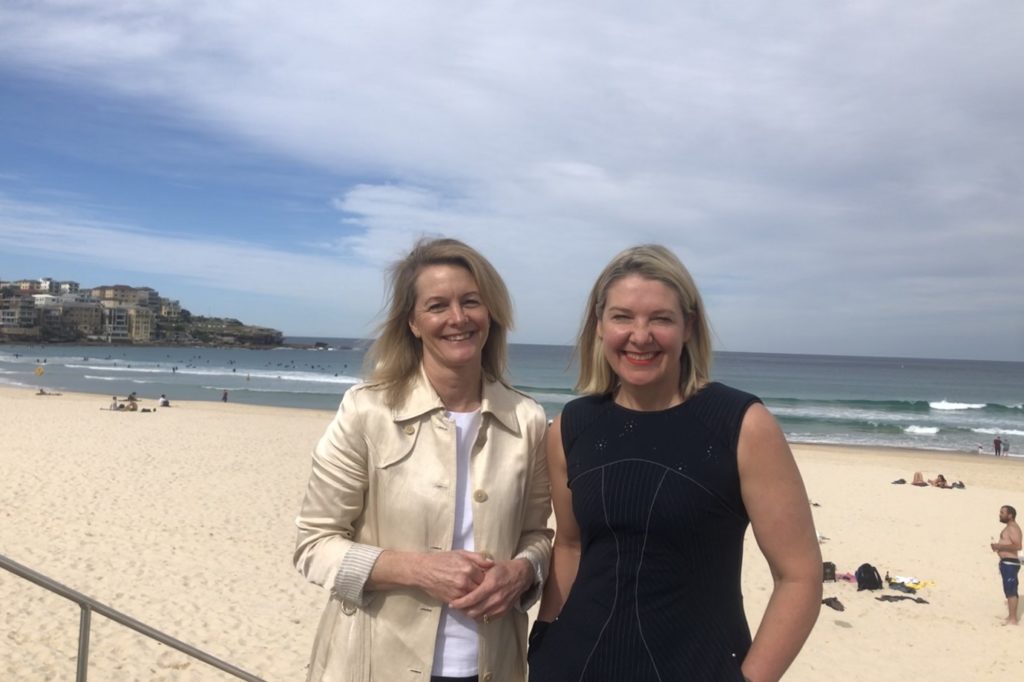For the better part of the last century, surf life saving clubs have been a fixture of coastal communities and have played a major role in enriching the lives of many Australians.
Surf Life Saving Australia (SLSA), the peak authority on water safety, drowning prevention and rescue, is one of the country’s biggest community organisations. It’s been around since 1907 but it wasn’t until 40 years ago that women were admitted as full members.
For decades, women were unable to save lives as part of SLSA and were not permitted to compete or join the organisation’s administration.
Things look a little different these days, with women comprising 45 per cent of SLSA’s total membership base. Unfortunately, women continue to be poorly represented in leadership positions, making up just over 20 per cent of leadership roles (on boards, or as presidents or club captains).

SLSA life member and board director Suzanne Storrie has worked tirelessly to get a mentoring program for women surf live savers off the ground at SLSA and has recently welcomed the first cohort of women into the program.
“We’re fortunate to have many talented women within our movement and I’m passionate about ensuring Surf Life Saving achieves gender equity in leadership positions and decision-making roles across our organisation,” Storrie said about the program, which launched at the start of July.
The Women’s Mentoring Program will be facilitated by McCarthy Mentoring, led by executive director Sophie McCarthy and will run for 12 months. The program will partner female mentors from SLSA with 20 female mentees from around Australia.

Dr Leesa Equid of Swanbourne Nedlands SLSC is one of the mentors who is participating in the program.
“I’ve been part of the Surf Life Saving movement for just over 10 years now, and I’ve moved up through the organisation to now sit on the State Board,” she said.
“My motivation for applying for the program was I wanted to be able to give an opportunity to someone that I never had.”
Below, Sophie McCarthy from McCarthy Mentoring tells Women’s Agenda more about the program, and what benefits SLSA can expect as more women rise up into leadership positions.
Could you tell us a little about the training and online resources used to facilitate the SLSA mentorship program for women?
We held separate virtual workshops for mentees and mentors to clarify their roles, share some resources on best practice, role play scenarios, set goals and give people the opportunity to ask questions and share experiences.
The main part of the mentoring program will be the conversations between the mentees and their mentors, but a key resource will be our online platform called one2one which is used by all participants on our programs.
Tailored for each organisation, it’s a structured online guide that covers 10 core leadership topics, and provides participants with access to carefully selected business articles, case studies, inspirational interviews, our tips and advice on getting the most out of the sessions, and interactive activities to work on and discuss.
What’s the current make up of women in leadership positions at SLSA and what are the outcomes you’d like to see as a result of the mentoring program?
Currently only 20.6% of SLSA senior leadership roles (Boards, Presidents, and Club Captains) are held by women. Across the country, only 15.8% of Club Presidents and 20.5% Club Captains are women. With women comprising 45% of SLSA membership, these statistics make it clear that the composition of the leadership doesn’t reflect the membership.
The Women’s Mentoring Program aims to boost the representation of women in these roles, by supporting and encouraging the program participants to feel excited and confident about their leadership skills and by giving them a practical plan to secure senior roles in their clubs.
As more women rise to leadership positions at SLSA, what kind of benefits do you expect to see?
Research shows that having a better gender balance in senior leadership roles increases the performance of organisations, and I’m sure that will be the case at SLSA.
A more diverse leadership also often translates to a broader range of thinking and approaches. SLSA was established in 1907. 113 years later perhaps more women in leadership positions will drive fresh approaches to the way SLSA does some things.
What will a culture of continued mentorship bring to an organisation like SLSA?
Mentoring is really a form of succession planning, and a retention and development strategy for talent. It is an investment in the next generation of leaders and the future success of the organisation.
From our experience running mentoring and leadership programs over the past 20 years we know that people who are well mentored, enjoy their careers more, are promoted faster and earn more.
For SLSA that might mean an increase in female membership of the organisation, and that for those women who are no longer active members, they are perhaps more likely to remain members of the organisation and to mentor younger women members. For organisations we know that a mentoring culture increases engagement, builds relationships, and develops leadership skills and capability.
*******
Get The Sporty Wrap in your inbox, our weekly update on women in sport.


